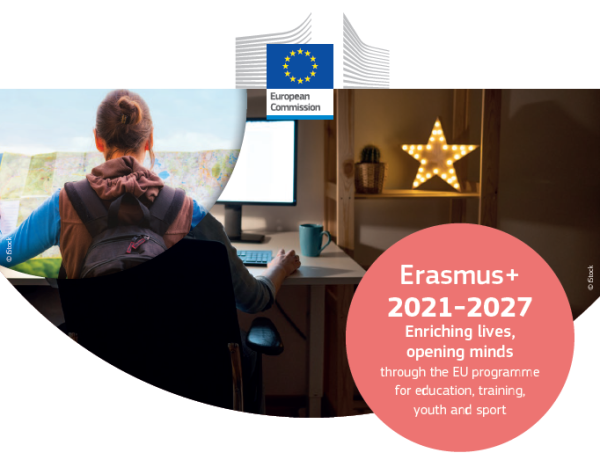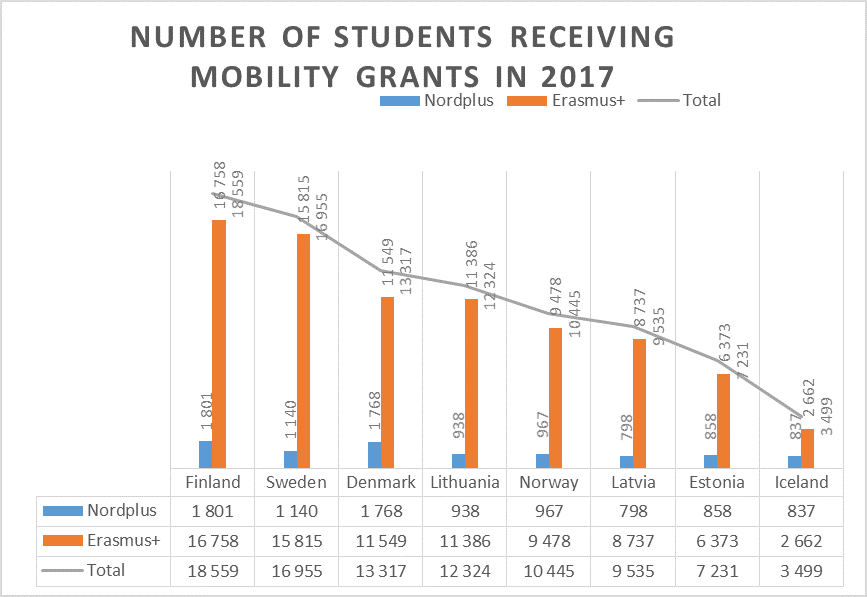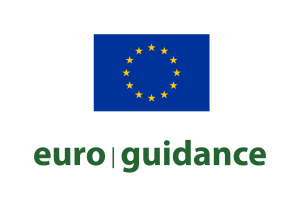Module 1: Why learning mobility
EXPECTED LEARNING OUTCOME: You will be able to argument how learning mobility can help your client group develop skills that are in demand on the labour market
2. Participation in learning mobility
 In 2019, 17 million Europeans lived or worked in a country other than that of their nationality, i.e., almost 3% of the European population. In addition to that, the number of students who study in another country was around 1.3 million, or 23% of the total student population.
In 2019, 17 million Europeans lived or worked in a country other than that of their nationality, i.e., almost 3% of the European population. In addition to that, the number of students who study in another country was around 1.3 million, or 23% of the total student population.The Erasmus+ programme (and various other European programmes before that), provides financial support towards learning mobilities. In 2021 a new seven year’s programme commenced, with the staggering total budget of 26.2 billion €, with many new opportunities for the entire education sector. The main changes are:
- The possibility of student exchange both in primary and secondary school, in the same way as for university students.
- Small-scale partnerships where at least two organisations, from at least two program countries, can work together to increase the quality of their activities. Such a partnership can, for example, focus on the development of guidance practices. The idea is to make Erasmus + available to small-scale players with limited organisational capacity.
- In addition to physical mobility, virtual learning has been introduced and in e.g. higher education a so-called blended mobility is launched, where students can combine a shorter mobility period (5-30 days) with a virtual component.
- Being able to apply for accreditation is a novelty for institutions that allows for more long-term planning and makes it easier to handle applications for mobility from their students and staff.
An inclusion and diversity strategy is one of the priorities of the new Erasmus+ programme and the goal is to better reach out to more participants with fewer opportunities. The goal of this priority is to include individuals who would not otherwise participate and let everyone take advantage of the programme's opportunities. Barriers that can hinder participation can do so alone or as a combination of various factors such as:
- Disabilities and health problems (physical, mental, intellectual, or sensory)
- Barriers linked to education and training systems (early school-leavers, NEETs, and low-skilled adults)
- Cultural differences (migrants and refugees, people belonging to a national or ethnic minority, sign language users etc.)
- Social barriers (social marginalisation and/or family circumstances)
- Economic barriers (economic disadvantage or lack of support)
- Barriers linked to discrimination (a combination of two or several of these barriers: gender, age, ethnicity, religion, beliefs, sexual orientation, disabilities, or intersectional factors)
- Geographical barriers (remote or rural /peripheral areas, urban suburbs, less serviced areas or less developed areas in third countries)
Environment and climate action is another priority. This means that projects that raise awareness of climate change are encouraged, environmentally friendly travel is promoted and virtual mobility opportunities are provided as alternatives to physical mobility.
"People from the Nordic/Baltic countries also have access to funding for studies or work placements abroad through the Nordplus programme. In 2018, almost 9.500 people were granted such support."
In the Nordic/Baltic countries, the number of participants in Nordplus mobilities varied among countries.
The figure below shows the number of students from the Nordic/Baltic countries at all levels of education receiving mobility grants in 2017.

Source: Erasmus+ and Nordplus data, compiled by Euroguidance Latvia
**
